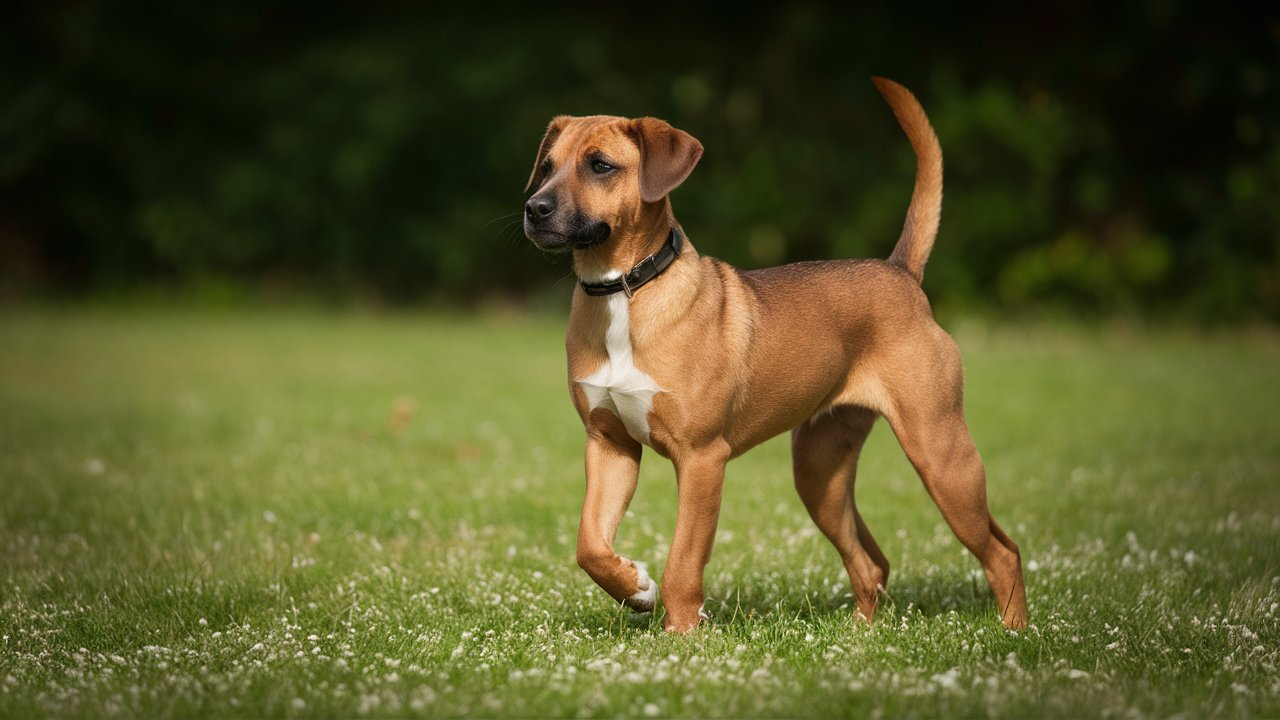Thai Ridgeback Comprehensive Guide:100% Ancient and Unique
The Thai Ridgeback, often simply referred to as the “Mah Thai Lang Ahn,” is a unique and ancient breed that hails from Thailand. Known for its distinctive ridge of hair running along its back, this breed has a rich history and a striking appearance that sets it apart from other dogs. This comprehensive guide will delve into the breed’s history, characteristics, care requirements, and much more.
Table of Contents
- Introduction
- History and Origins
- Physical Characteristics
- Temperament and Personality
- Training and Socialization
- Health and Lifespan
- Grooming and Care
- Diet and Nutrition
- Activities and Exercise Needs
- Thai Ridgebacks as Family Pets
- Finding a Thai Ridgeback
- Personal Anecdotes
- Conclusion

1. Introduction
The Thai Ridgeback is a breed that exudes both elegance and mystery. With its muscular build, keen intelligence, and loyal nature, it’s no wonder this breed has garnered a dedicated following worldwide. Despite its ancient roots, the Thai Ridgeback remains relatively rare outside its native Thailand.
2. History and Origins
The Thai Ridgeback is one of the oldest known dog breeds, with a history that can be traced back over 4,000 years. Originating in the eastern regions of Thailand, these dogs were primarily used for hunting and guarding property. Their isolation in rural areas allowed the breed to develop naturally without much influence from other breeds, preserving their unique characteristics.
Evolution and Natural Selection
In the wild, Thai Ridgebacks had to fend for themselves, hunting small game and protecting their territory from predators. This environment led to the development of their keen instincts, agility, and resilience. Natural selection played a significant role in shaping the breed, ensuring only the strongest and most adaptable dogs survived.
3. Physical Characteristics
The Thai Ridgeback is a medium-sized dog, typically weighing between 35 to 75 pounds and standing about 20 to 24 inches tall at the shoulder. They have a short, smooth coat that comes in various colors, including black, blue, red, and fawn.
The Distinctive Ridge
One of the most striking features of the Thai Ridgeback is the ridge of hair that runs along its back, growing in the opposite direction of the rest of the coat. This ridge can take on various shapes and patterns, including whorls and crowns, and is a defining characteristic of the breed.
Other Notable Features
- Ears: The Thai Ridgeback has large, triangular ears that stand erect, giving them an alert and attentive appearance.
- Eyes: Their almond-shaped eyes are typically brown, conveying intelligence and curiosity.
- Tail: The tail is thick at the base and tapers to a point, often carried in a sickle shape.
4. Temperament and Personality
Thai Ridgebacks are known for their loyalty, intelligence, and independence. They form strong bonds with their families and can be protective, making them excellent watchdogs. However, their independent nature means they can be somewhat aloof with strangers and may require early socialization to ensure they are well-adjusted.
A Loyal Companion
Owners of Thai Ridgebacks often speak of the deep bond they share with their dogs. These dogs are known to be affectionate with their families, often following their owners around the house and enjoying close physical contact.
Intelligence and Trainability
Thai Ridgebacks are highly intelligent and can be trained to perform various tasks and tricks. However, their independent streak means they can be stubborn at times. Consistent, positive reinforcement training methods work best with this breed.
5. Training and Socialization
Training a Thai Ridgeback requires patience, consistency, and a firm but gentle hand. Early socialization is crucial to ensure they grow into well-mannered adults. Exposing them to different people, places, and experiences will help them become more adaptable and less wary of new situations.
Basic Training Tips
- Start Early: Begin training and socialization as early as possible to establish good habits.
- Positive Reinforcement: Use treats, praise, and play to reward good behavior.
- Consistency: Be consistent with commands and expectations to avoid confusion.
- Socialization: Introduce your Thai Ridgeback to various environments, people, and other animals.
6. Health and Lifespan
Thai Ridgebacks are generally healthy dogs with a lifespan of around 12 to 15 years. However, like all breeds, they can be prone to certain health conditions. Regular veterinary check-ups and a healthy lifestyle can help mitigate these risks.
Common Health Issues
- Hip Dysplasia: A genetic condition where the hip joint doesn’t fit properly into the hip socket, leading to arthritis and pain.
- Dermoid Sinus: A congenital defect that can cause skin infections. It’s more common in Ridgeback breeds due to the ridge.
- Allergies: Some Thai Ridgebacks may suffer from skin allergies, which can be managed with proper care and diet.
7. Grooming and Care
The Thai Ridgeback’s short coat is relatively low-maintenance, but regular grooming helps keep their skin and coat healthy.
Grooming Tips
- Brushing: Brush your Thai Ridgeback once a week to remove loose hair and dirt.
- Bathing: Bathe them as needed, typically every few months, or when they get particularly dirty.
- Nail Trimming: Trim their nails regularly to prevent overgrowth and discomfort.
- Ear Cleaning: Check their ears for signs of infection and clean them as needed.
8. Diet and Nutrition
A balanced diet is essential for keeping your Thai Ridgeback healthy and active. High-quality commercial dog food or a well-planned homemade diet can provide the necessary nutrients.
Nutritional Needs
- Protein: Essential for muscle development and overall health. Look for dog foods with high-quality animal proteins.
- Fats: Provide energy and support skin and coat health. Healthy sources include fish oil and chicken fat.
- Carbohydrates: Provide energy but should be balanced with protein and fats.
- Vitamins and Minerals: Ensure a balanced intake of essential vitamins and minerals for overall health.
9. Activities and Exercise Needs

Thai Ridgebacks are active dogs that require regular exercise to stay healthy and happy. They enjoy various activities, including walking, running, and playing.
Exercise Recommendations
- Daily Walks: Aim for at least one hour of exercise each day, divided into two sessions.
- Playtime: Engage in interactive play sessions, such as fetch or tug-of-war.
- Mental Stimulation: Provide puzzle toys and training exercises to keep their minds sharp.
10. Thai Ridgebacks as Family Pets
Thai Ridgebacks are unique dogs with a blend of loyalty, independence, and protective instincts. When considering them as family pets, it’s important to understand both their positive attributes and potential challenges.
Loyalty and Protective Nature
Thai Ridgebacks are renowned for their loyalty. They form strong bonds with their family members and are known to be protective, making them excellent watchdogs. This breed will often place itself between its family and any perceived threat, alerting its owners with a deep bark.
Personal Anecdote: One evening, our Thai Ridgeback, Max, demonstrated his protective nature in a touching way. We were having a backyard barbecue, and a curious neighbor’s dog wandered over. While the other dogs were friendly, Max placed himself between the newcomer and the children, ensuring the situation was safe before relaxing. It was a clear reminder of his instinct to guard and protect.
Interaction with Children
Thai Ridgebacks can be great with children, especially if they are raised with them. Their playful yet gentle demeanor can make them wonderful playmates. However, due to their protective nature, it’s essential to teach children how to interact respectfully with the dog, ensuring a harmonious relationship.
Tips for Families with Children:
- Early Socialization: Introduce your Thai Ridgeback to children at a young age to help them become accustomed to their energy and movements.
- Supervision: Always supervise interactions between young children and dogs to prevent accidental injuries on either side.
- Education: Teach children to respect the dog’s space and not to disturb them while they are eating or sleeping.
Compatibility with Other Pets
Thai Ridgebacks can coexist peacefully with other pets, particularly if they are socialized from a young age. However, their strong prey drive means they might view smaller animals as potential prey, so careful introductions and supervision are necessary.
Introducing a Thai Ridgeback to Other Pets:
- Gradual Introduction: Introduce your Thai Ridgeback to other pets slowly and in a controlled environment.
- Positive Associations: Use treats and positive reinforcement to create a pleasant association with the presence of other animals.
- Separate Spaces: Initially, provide separate spaces for your Thai Ridgeback and other pets to retreat to if they feel overwhelmed.
Exercise and Mental Stimulation

Thai Ridgebacks are an active breed that requires regular physical exercise and mental stimulation to remain happy and healthy. Families who enjoy outdoor activities will find a great companion in this breed.
Exercise Ideas:
- Daily Walks: Aim for at least an hour of exercise per day, divided into multiple walks or play sessions.
- Interactive Play: Engage in games like fetch, tug-of-war, or agility training.
- Mental Challenges: Provide puzzle toys and training exercises to keep their minds sharp.
Personal Anecdote: Our Thai Ridgeback, Bella, loved our weekend hiking trips. Her agility and stamina made her the perfect hiking buddy. Watching her navigate trails with ease and enthusiasm was always a highlight of our outings. The exercise not only kept her fit but also strengthened our bond.
Training and Discipline
Consistency in training is key to raising a well-behaved Thai Ridgeback. They respond best to positive reinforcement techniques, such as treats, praise, and playtime.
Training Tips:
- Consistency: Use the same commands and rules consistently to avoid confusion.
- Positive Reinforcement: Reward good behavior immediately to reinforce positive actions.
- Patience: Be patient and understanding, as Thai Ridgebacks can be independent and may take time to learn new commands.
Living Arrangements
Thai Ridgebacks can adapt to various living situations, from apartments to houses with yards. However, due to their energy levels, they thrive in environments where they have space to run and play.
Ideal Living Conditions:
- Secure Yard: If you have a yard, ensure it’s securely fenced to prevent escapes.
- Indoor Living: Thai Ridgebacks are best suited to indoor living where they can be close to their families.
- Temperature Considerations: Their short coat means they may need extra protection in cold weather, such as a dog coat or sweater.
Personal Anecdote: When we first brought Rex home, we lived in a small apartment. Despite the limited space, Rex adapted well thanks to our commitment to regular walks and trips to the local dog park. Eventually, we moved to a house with a yard, and watching Rex enjoy the open space was incredibly rewarding.
Challenges to Consider
While Thai Ridgebacks have many wonderful qualities, potential owners should be aware of some challenges:
- Stubbornness: Their independent nature can make them stubborn at times, requiring firm and consistent training.
- Prey Drive: Their natural prey drive means they might not be suitable for homes with small pets.
- Socialization Needs: They can be aloof with strangers, so early and ongoing socialization is crucial.
11. Finding a Thai Ridgeback
Finding a Thai Ridgeback involves careful research and consideration. Whether you choose to purchase from a reputable breeder or adopt from a rescue organization, it’s important to ensure you’re getting a healthy and well-socialized dog. This section will guide you through the process of finding and acquiring a Thai Ridgeback.
Researching Reputable Breeders
One of the most critical steps in finding a Thai Ridgeback is to locate a reputable breeder. Reputable breeders prioritize the health, temperament, and well-being of their dogs, ensuring that they are raised in a loving and healthy environment.
Steps to Find a Reputable Breeder:
Start with Breed Clubs and Associations:
- Begin your search with breed clubs and associations, such as the Thai Ridgeback Club of America or the Kennel Club in your country. These organizations often maintain lists of reputable breeders who adhere to their standards and ethics.
Ask for Recommendations:
- Reach out to current Thai Ridgeback owners, veterinarians, and dog trainers for recommendations. Personal referrals can provide valuable insights into the breeder’s reputation and the quality of their dogs.
Visit Dog Shows and Events:
- Attend dog shows and events where Thai Ridgebacks are present. This allows you to meet breeders in person, see their dogs, and ask questions about their breeding practices.
Research Online:
- Utilize online resources, such as breeder directories, forums, and social media groups dedicated to Thai Ridgebacks. Look for breeders with positive reviews and testimonials from previous buyers.
Questions to Ask a Breeder:
Health Testing:
- What health tests do you perform on your breeding dogs?
- Can you provide documentation of health clearances for the puppy’s parents?
Breeding Practices:
- How long have you been breeding Thai Ridgebacks?
- How do you select breeding pairs to ensure good temperament and health?
Puppy Socialization:
- How do you socialize your puppies before they go to their new homes?
- What kind of environment are the puppies raised in?
Support and Guarantees:
- Do you offer a health guarantee for your puppies?
- Will you be available for support and advice after the puppy goes home?
Visiting the Breeder
Once you’ve identified a potential breeder, it’s important to visit their facility. A visit allows you to assess the living conditions of the dogs and the breeder’s operation.
What to Look for During a Visit:
Cleanliness and Safety:
- The breeding facility should be clean, safe, and well-maintained. Dogs should have access to clean water, nutritious food, and comfortable living areas.
Health and Behavior of Dogs:
- Observe the health and behavior of the breeder’s dogs. They should appear healthy, active, and well-socialized. Puppies should be curious and playful, without signs of illness or neglect.
Interaction with the Breeder:
- A reputable breeder will be open and transparent, willing to answer your questions and provide documentation. They should also be interested in learning about you and your suitability as a future owner.
Considering Adoption
Adoption is a wonderful option for those looking to provide a loving home to a Thai Ridgeback in need. There are breed-specific rescues and general animal shelters that may have Thai Ridgebacks available for adoption.
Steps to Adopt a Thai Ridgeback:
Research Breed-Specific Rescues:
- Look for rescues that specialize in Thai Ridgebacks. These organizations often have dogs of various ages and backgrounds available for adoption.
Visit Animal Shelters:
- Check local animal shelters and humane societies. While Thai Ridgebacks are rare, you might still find one in need of a home.
Online Adoption Platforms:
- Use online adoption platforms like Petfinder, Adopt-a-Pet, and Rescue Me. These sites allow you to search for Thai Ridgebacks available for adoption in your area.
Questions to Ask When Adopting:
Dog’s History:
- What is the dog’s background and reason for being in rescue?
- Does the dog have any known behavioral or health issues?
Temperament and Socialization:
- How has the dog been socialized with people and other animals?
- What is the dog’s temperament like in different situations?
Support and Resources:
- What kind of support does the rescue provide post-adoption?
- Are there resources available for training and acclimating the dog to its new home?
Preparing for Your New Thai Ridgeback
Whether you purchase from a breeder or adopt from a rescue, preparing your home and family for the new arrival is crucial. Here are some steps to ensure a smooth transition:
Home Preparation:
Create a Safe Space:
- Set up a designated area where your Thai Ridgeback can feel safe and comfortable. This could be a crate or a specific room in your home.
Gather Supplies:
- Purchase the necessary supplies, including a bed, food and water bowls, a collar and leash, grooming tools, and toys.
Dog-Proof Your Home:
- Ensure your home is safe for a curious dog. Remove or secure items that could be harmful, such as electrical cords, toxic plants, and small objects that could be swallowed.
Family Preparation:
Educate Your Family:
- Make sure everyone in the household understands the responsibilities of owning a Thai Ridgeback. Discuss feeding, exercise, training, and grooming routines.
Establish Rules and Routines:
- Set clear rules and routines for your new dog. Consistency is key to helping your Thai Ridgeback adjust to its new home.
Plan for Training and Socialization:
- Arrange for training classes or plan a training schedule to help your dog learn basic commands and manners. Socialization is also important, so plan outings to expose your dog to different environments and experiences.
12. Personal Anecdotes

Owning a Thai Ridgeback can be a unique and rewarding experience. Many owners share stories of their dogs’ loyalty, intelligence, and unique personalities.
A Story of Loyalty
I remember when I first got my Thai Ridgeback, Luna. She was a shy puppy, wary of new people and places. With time, patience, and consistent training, she blossomed into a confident and loving companion. One night, Luna’s protective instincts shone through when she alerted us to a stranger near our home. Her vigilance and loyalty reassured us that we were in good hands.
13. Conclusion
The Thai Ridgeback is a fascinating breed with a rich history and unique characteristics. They require dedicated care, training, and socialization but can make wonderful companions for those who appreciate their loyalty and independence. Whether you’re considering adding a Thai Ridgeback to your family or simply want to learn more about this remarkable breed, understanding their needs and traits is key to a successful and fulfilling relationship.





